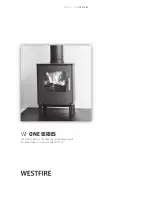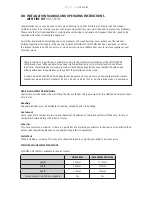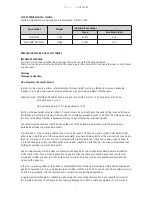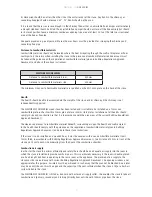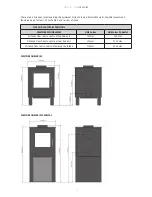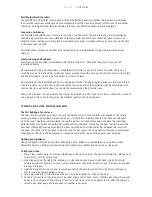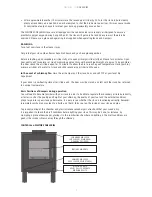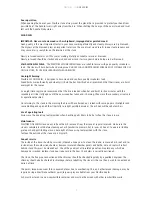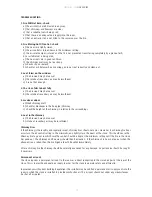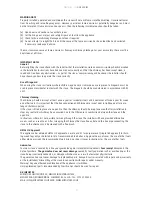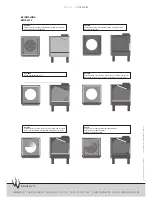
WESTFIRE · WF
ONE SERIES
WESTFIRE · WF
ONE SERIES
5
its dimension should be not less than the size of the outlet socket of the stove. Any bend in the chimney or
connecting fluepipe should not exceed 45°. 90° bends should not be used.
If it is found that there is excessive draught in the chimney then either an adjustable flue damper or alternatively
a draught stabiliser should be fitted. The adjustable flue damper should not close off the flue entirely but should
in its closed position leave a minimum continuous opening free area of at least 20 % of the total cross sectional
area of the flue or fluepipe.
Adequate provision e.g. easily accessible soot door or doors must be provided for sweeping the chimney and
connecting flue pipe
distance to Combustible materials
Combustible materials should not be located where the heat dissipating through the walls of fireplaces or flues
could ignite it. Therefore when installing the stove in the presence of combustible materials due account must
be taken of the guidance on the separation of combustible material given in Building Regulations Approved
Document J and also in these stove instructions.
The minimum distances to flammable materials are specified on the EN 13240 plate on the back of the stove.
Hearth
The hearth should be able to accommodate the weight of the stove and its chimney if the chimney is not
independently supported.
The WESTFIRE WF ONE SERIES wood stove has been tested and is suitable to be installed on a 12mm non
combustible plate such as Westfire 12mm glass plates or 20mm slate plates. Installation of all hearths should
comply in size and construction so that it is in accordance with the provisions of the current Building Regulations
Approved Document J.
The clearance distances to combustible material beneath, surrounding or upon the hearth and walls adjacent
to the hearth should comply with the guidance on the separation of combustible material given in Building
Regulations Approved Document J and also in these stove instructions.
If the stove is to be installed on a wooden floor, it must be covered with a non-combustible material at least
12mm thick, in accordance with Building Regulations Approved Document J, to a distance of 30 cm in front of the
stove and 15 cm to each side measuring from the door of the combustion chamber.
Combustion air supply
In order for the stove to perform efficiently and safely there should be an adequate air supply into the room in
which the stove is installed to provide combustion air. This is particularly necessary if the room is double-glazed
or a flue draught stabiliser is operating in the same room as the appliance. The provision of air supply to the
stove must be in accordance with current Building Regulations Approved Document J. An opening window is not
appropriate for this purpose. Air inlets must be positioned in such a way that they cannot be blocked. An air inlet
may be a vent (the vent must be open and the capacity of the vent sufficient when the stove is lit) or a fresh air
system linked to the stove.
The WESTFIRE WF ONE SERIES is fitted as standard with a closed air supply collar, this enables the stove to take all
combustion air (primary, secondary and tertiary) directly from outside with 100mm pipe from the stove.
WEStFIRE WF ONE SERIES
Distance to combustible materials rear
450mm
Distance to combustible materials side
650mm


